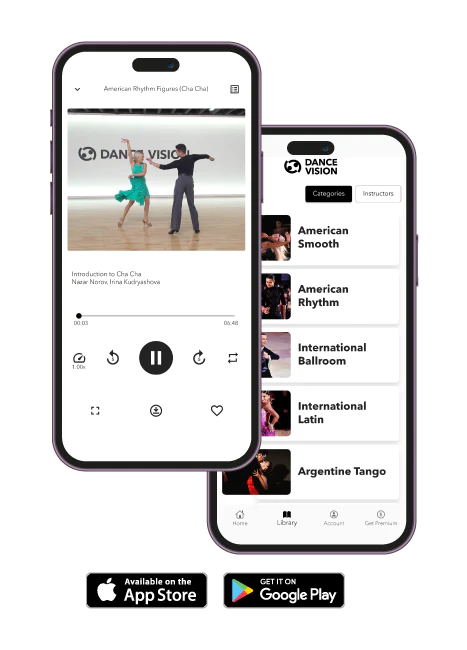Have you ever pondered the question: What exactly is dancesport? It's competitive ballroom dancing, where couples perform choreographed routines in diverse styles. The enthralling aspect lies in its seamless blend of art and sport, as dancers express emotions in sync with movements. The variety of dance styles and competitive spirit enhance the engaging appeal of dancesport—read on to delve deeper into this captivating world.
Origin
Dancesport has its technical origins in Ballroom Dancing, transitioning into a competitive realm. Traditionally, ballroom dancing served as a social activity during the 19th and early 20th centuries, enjoyed at social gatherings and dance halls. As the early 20th century unfolded, ballroom dancing evolved into its competitive form, leading to the emergence of the term "dancesport." Competitions played a pivotal role in standardizing rules and organizing events, particularly in Europe. Dancesport has since spread worldwide and is enjoyed by everyone.
Styles
Ballroom dancing encompasses 4 main styles:
- American Smooth - comprises dances known for their flowing and continuous movements, with Waltz, Tango, Foxtrot, and Viennese Waltz serving as prime examples. Smooth dance styles originated from European and American social dances, evolving over time to integrate elements from diverse dance genres, including ballet and contemporary dance.
What is American Smooth - American Rhythm - comprises dances featuring a distinct and syncopated beat, with examples such as Cha-Cha, Rumba, East Coast Swing, Bolero, and Mambo. This dance style was influenced by African, Caribbean, and Latin American cultures, creating a vibrant and diverse collection of styles. This style emphasizes freedom in body movement, fostering a dynamic and engaging dance experience.
What is American Rhythm - International Ballroom - is the epitome of classic ballroom dance, featuring five elegant and poised dances—Waltz, Tango, Viennese Waltz, Foxtrot, and Quickstep. In this style, dancers remain in a closed hold, maintaining a graceful and connected "dance position" throughout the entirety of each dance.
What is International Ballroom - International Latin - spotlights dances influenced by Latin American, African, and European cultures, recognized for their lively and rhythmic character. This category encompasses dances such as Cha-Cha, Rumba, Samba, Paso Doble, and Jive.
What is International Latin
Dances
Ballroom dancing encompasses various dances, and here are descriptions of some of them:
- Waltz - a slow and elegant dance characterized by a smooth, gliding motion, usually danced to 3/4 time music.
- Tango - involves sharp, staccato movements, exuding intensity and passion, and is danced to 2/4 time music.
- Foxtrot - a dance known for its smooth and sophisticated style, featuring long, flowing movements and typically set to 4/4 time music.
- Viennese Waltz - a swifter rendition of the traditional waltz, characterized by continuous spinning and rotating movements, and danced to 3/4 time music.
- Quickstep - a vibrant and lively dance with quick footwork and syncopated steps, typically performed to 4/4 time music.
- Cha-Cha - a playful and flirtatious dance characterized by quick steps and hip movements, often performed to upbeat Latin music.
- Rumba - a dance known for its romantic and sensual qualities, highlighting slow, controlled movements and typically danced to the rhythms of Latin music.
- Samba - a lively and vibrant dance known for its energetic style, characterized by lively hip movements, and it originated in Brazil.
- Paso Doble - a dance with a dramatic and bold flair, symbolizing a bullfight and performed to the rhythms of Spanish music.
- Jive - a high-energy dance characterized by its fast-paced and lively nature, featuring energetic kicks and flicks, and typically danced to the upbeat rhythms of swing or rock and roll music.
Explore all 19 different dances of Dancesport, from the steps to the music of each!
The 19 Different Types of Ballroom Dance
Competitive Arena
The term "competitive arena" in dancesport designates the venue for events like tournaments, exhibits, and competitions, serving as the central stage to showcase talent and determine excellence in the world of dancesport. Inherently competitive, dancesport involves dancers presenting their skills to compete for recognition and awards, with judges carefully evaluating each routine and expression.
Discover top-tier dancesport competitions.
55 Dance Vision Endorsed Ballroom Dance Competitions around the World
5 Irrefutable Reasons Why Dance Is a Sport
'Pro'/'Am'
The terms "Pro" and "Am" refer to Professional and Amateur Couples, a distinctive concept introduced by dance organizations in America. This classification provides an opportunity for dancers of varying skill levels and ages to engage in and enjoy dancesport.
Global Phenomenon
Dancesport has achieved global popularity, extending beyond specific regions to garner participation on an international scale. Dancers from diverse countries have significantly contributed to its recognition as both a cultural and competitive phenomenon worldwide.
Benefits Beyond the Dance Floor
Dancesport offers numerous advantages. Among them are enhanced mental well-being, strengthened social connections, improved physical fitness, and a platform for personal expression and creativity.
Dancesport, stemming from ballroom roots, has grown into a globally recognized, diverse, and competitive pursuit providing a multitude of benefits to its participants.

